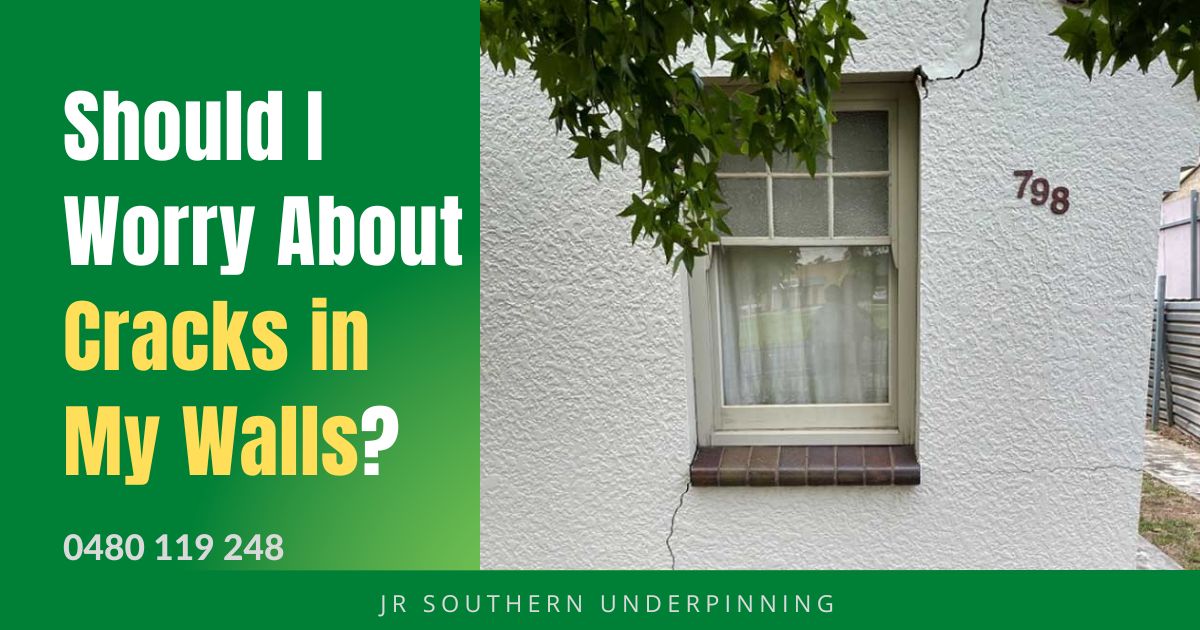Types of Cracks & When You Should Be Worried
Cracks in the wall of a home are often an indication of movement or settling.
Numerous factors can cause wall cracks, including:
- Changes in temperature and humidity
- Poor foundation support
- Seismic activity
- Soil density around the property
- Tree roots
In some cases, cracks may simply be cosmetic blemishes with no structural implications; however, it is important to inspect any crack in your home’s wall to determine the cause and assess whether further action is necessary.
In cases where cracks are more serious, they may need to be filled or patched with a suitable material or, in extreme cases, require professional help such as foundation repairs or strengthening the structure through underpinning.
If you notice any significant cracking in your walls, contact John at JR Southern Underpinning to assess your home before attempting to undertake repairs yourself.
Cracks are one of the most common signs of structural damage in a home. Several types of cracks can appear in different parts of your home, each with its cause and severity.
Hairline Cracks:
Hairline cracks can appear at junctions between walls and ceilings or on walls near windows or doors. These are usually caused by shrinkage due to changes in temperature or humidity, as well as minor settling of the house. These cracks are generally harmless and easily patched; however, if you have many hairline cracks in your walls or floors, it’s best to seek professional advice.
Horizontal Cracks:
Horizontal cracks often appear along mortar joints in brick walls or on foundation walls. These are usually caused by excessive pressure from the soil surrounding the foundation, as well as the natural settling of the house. Horizontal cracks can be more severe and require a professional inspection to determine if structural issues cause them.
Vertical Cracks:
Vertical cracks often appear along mortar joints in brick walls or on foundation walls. These can indicate significant movement in the foundation, which could require extensive repairs. A professional should always inspect Vertical cracks to determine the cause and severity of the problem.
Stair-Step Cracks:
Stair-step cracks are characterised by jagged, angled lines forming stair-like patterns in mortar joints along brick or foundation walls. These can indicate serious structural problems, such as the shifting of foundation walls or soil pressure. A professional inspection is needed to discover the cause and severity of these cracks.
Bulging Cracks:
Bulging cracks are characterised by a bulge along a wall or ceiling, accompanied by cracking that radiates outward from the centre of the bulge. These can indicate serious structural problems, such as excessive pressure from the soil surrounding the foundation or a roof structure that is weakened due to water damage. A professional inspection is necessary to determine the cause and severity of these cracks.
The bottom line is if you see any type of crack in your home, it’s essential to have it inspected by a professional right away. That way, you can address the problem before it becomes more serious.



